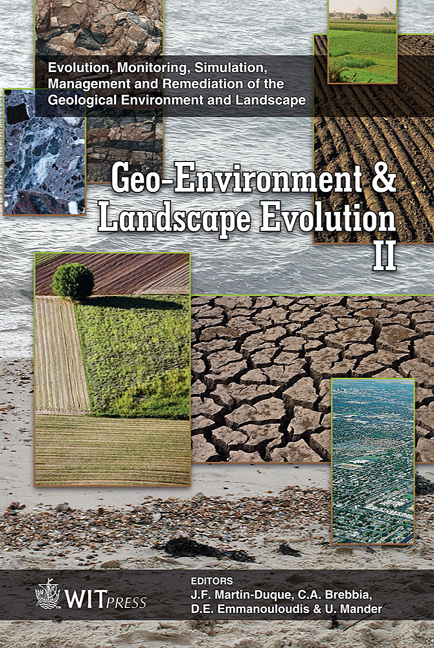Land Subsidence Evolution And Controlling Mechanisms Near Mexico City: Environmental Planning And Management
Price
Free (open access)
Transaction
Volume
89
Pages
10
Published
2006
Size
730 kb
Paper DOI
10.2495/GEO060211
Copyright
WIT Press
Author(s)
M. A. Ortega-Guerrero
Abstract
Mexico City is situated in the Basin of Mexico on a highly compressible lacustrine aquitard that overly highly productive aquifers of both volcanic and sedimentary origin. This aquitard contributes with regional recharge through leakage to the underlying alluvial-pyroclastic regional aquifer, from which about 50 m3/sec are pumped to supply water for the Metropolitan Area of Mexico City, to nearly 25 million inhabitants. The extensive lacustrine Chalco Plain in the southeastern part of Mexico City is underlined by an aquitard up to 300 m thick. This area was a shallow lake until the 1940s when it was drained for agricultural use and human habitation. In the middle 1980s, when major groundwater extraction began with the onset of the Santa Catarina Well Field in the middle of the Chalco Plain, subsidence of 2 m occurred between 1984 and 1989, causing a shallow lake to form and gradually expand. Land subsidence in the central part of the Chalco Basin has increased to 0.4 m/yr since 1984 and by 1991 total subsidence had reached more than 10 m at present. The rapid land subsidence in this area is causing the accumulation of meteoric waters during the rainy season resulting in extensive flooding of farmland and potentially urban areas. Three different stages of lake growth were identified: (i) ponding (1984-1989), (ii) lake formation (1990-1993), and (iii) bifurcation (1994-present). In this last stage, the local presence of a basalt layer in the middle of the Santa Catarina Well Field is causing differential consolidation and forming a local topographic elevation that permits the development of two separated lakes. Since the middle of the 1990s, the new lake conditions are permitting the growth of few aquatic native plants and arrival of different species of migratory birds: therefore, environmental planning and management for the southernmost end of the Basin of Mexico is proposed through the development of a series of connected artificial lakes to control urban growth, to improve environmental conditions of the MAMC, to develop ancient agricultural production systems such as the floating gardens or \“Chinampas” and recreational facilities with proportional benefits to the social and economical sectors. Keywords: land subsidence, consolidation, artifitial lake development, environmental planning.
Keywords
land subsidence, consolidation, artifitial lake development, environmental planning.





